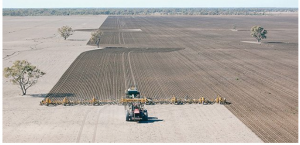The Story so Far.
 The question that should be asked is whether large swathes of wheat growing land in Australia and particularly in Western Australia will be viable in the future? Because if the answer is no, then now is the time to start looking at the ways and the means for restructuring Australia’s wheat belt.
The question that should be asked is whether large swathes of wheat growing land in Australia and particularly in Western Australia will be viable in the future? Because if the answer is no, then now is the time to start looking at the ways and the means for restructuring Australia’s wheat belt.
There are two conflicting forces at work. Two opinions based on two areas of science:
1. Soil amelioration is becoming popular in Western Australia in an effort to improve crop yields. It is expensive, in some cases very expensive. There are yield gains to be had, how long the gains last is open for debate because they vary site by site. There are also problems particularly with soil stability and structure.
2. Climate scientists are predicting falls in crop yields in Western Australia over the next twenty years to levels which I predict will make it uneconomic to grow wheat given the year on year rise in costs and the decline in the real price of wheat over the last fifty years.
Continue reading “Is the Future of Wheat Growing in Australia a Catch 22?”


